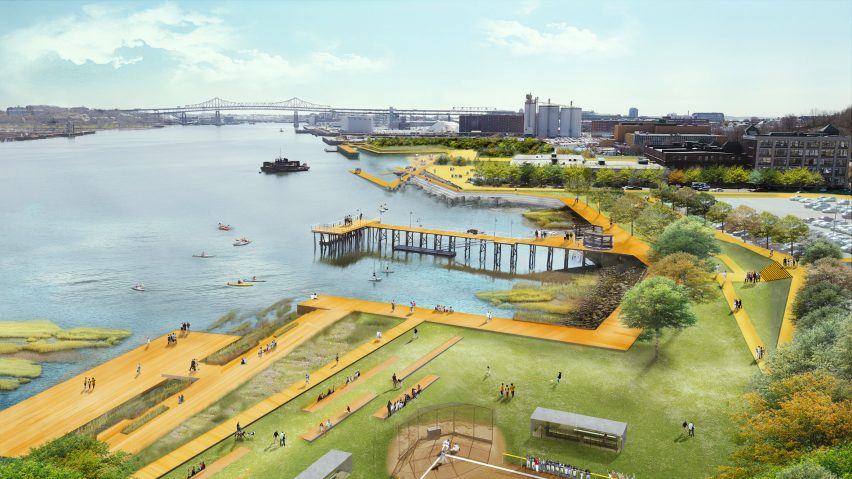
Boston responds to climate change with elevated parks and flood barriers
Boston has launched a plan to prevent flooding in its most vulnerable waterfront neighbourhoods, becoming the latest US city to respond to the threat of rising sea levels.
Released last week, the coastal Massachusetts city's climate change plan outlines strategies to protect the neighbourhoods of East Boston and Charlestown from an increased likelihood of flooding.
These areas are at particularly high risk due to low-lying pathways that lead directly down to the edge of Boston harbour. Both are predicted to frequently experience coastal flooding.
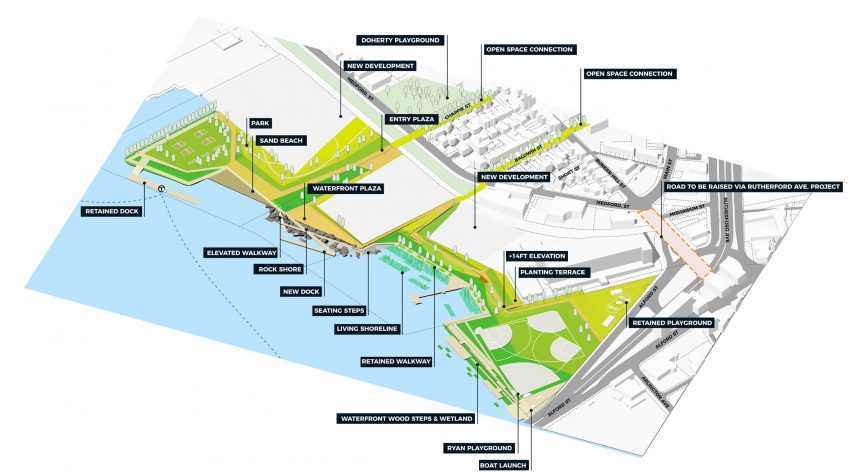
The Coastal Resilience Solutions For East Boston and Charlestown report outlines an urban development plan to block floodways into the neighbourhoods as soon as possible.
It comes in the wake of series of drastic and unpredictable weather events in the US, including hurricanes that devastated cities in Florida and Texas, which called for changes in urban planning. San Francisco and the Bay Area recently launched a design competition asking for ways to protect coastal areas from rising sea levels, as well as earthquakes, while New York City and Miami are also taking steps to address flooding.
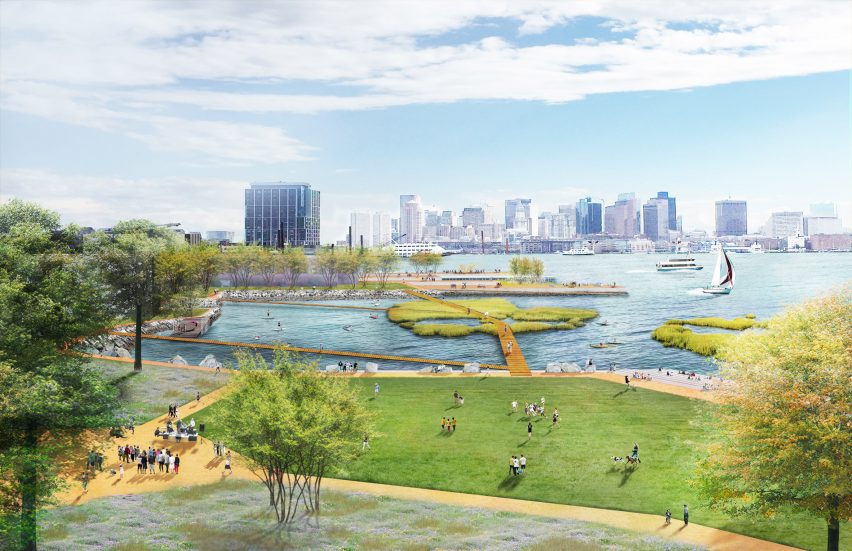
"Climate change is here," said Boston city mayor Martin J Walsh. "It's happening now. This year, we saw its effect in Texas, Florida, Puerto Rico, and across our country and world."
"In Boston, we are seeing more frequent flooding on our waterfront, especially in East Boston and Charlestown," he added. "It's more important than ever that we work together to make sure our city is ready for the changes ahead."
Boston intends to implement its flood-defence proposals in future city developments. Plans include raising a section of Charleston's Main Street – in front of the Schrafft's Center office complex – by two feet. Proposed redevelopment of the Schrafft's Center waterfront also calls for elevated parks and pathways that could act as a barricade along the water's edge, and offer protection to 330 residents.
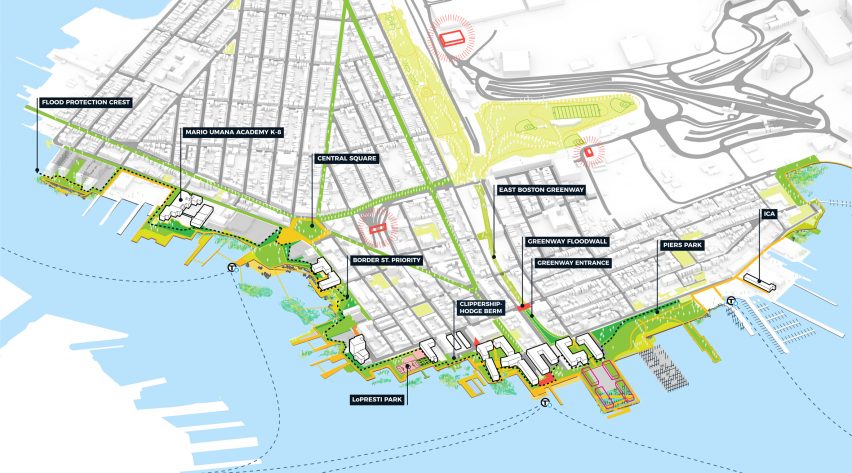
Another idea to protect Charlestown is to overhaul the waterside Ryan Playground with elevated pathways, plazas and beaches.
Suggestions to protect East Boston include the construction of a deployable flood wall, which could block the entrance to the linear Greenway park in anticipation of flooding, protecting 4,300 residents and over 70 businesses.
Other plans include elevating the low-level Greenway entrance and Piers Park II, creating a raised, public green space.
East Boston and Charlestown were already outlined as the city's most vulnerable coastal neighbourhoods in the Climate Ready Boston initiative, released last year.
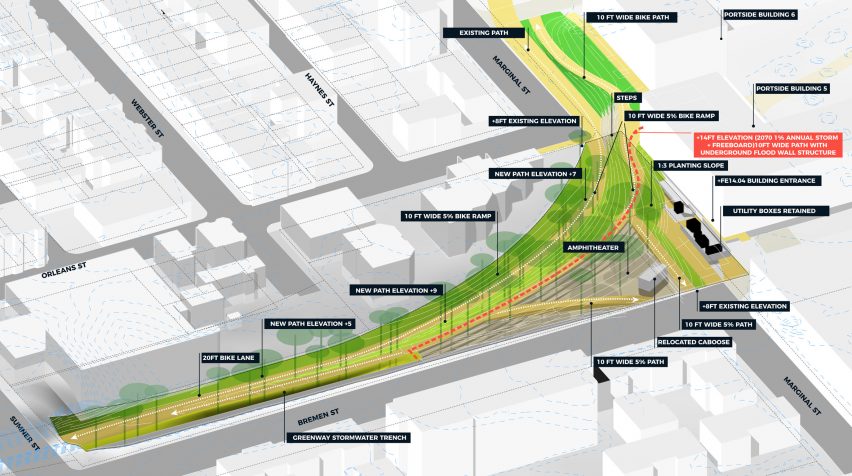
But other areas of the waterside city are also expected to become at risk in coming years, as sea levels are predicted to increase nine inches by 2030, 21 inches by 2050 and 36 inches by 2070. The Coastal Resilience Solutions For East Boston and Charlestown report also outlines a host of future strategies that take these figures into account.
The initiative is among many created to help Boston combat climate change, including Imagine Boston 2030 and Go Boston 2030.
Climate change was one of five topics discussed during Dezeen's Good Design for a Bad World series of talks during Dutch Design Week last month, along with pollution, politics, terrorism and the refugee crisis.
Visualisations are by Kleinfelder/Stoss.